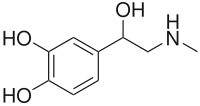
Photo from wikipedia
Astragali Radix polysaccharides (APSs) have a wide range of biological activities. Our preliminary experiment showed that APS-Ⅱ (10 kDa) was the main immunologically active component of APSs. However, the characteristic… Click to show full abstract
Astragali Radix polysaccharides (APSs) have a wide range of biological activities. Our preliminary experiment showed that APS-Ⅱ (10 kDa) was the main immunologically active component of APSs. However, the characteristic structure related to activity of APS-Ⅱ needs further verification and clarification. In this study, APS-II was degraded by endo α-1,4-glucosidase. The degraded products with different degrees of polymerization [1–3 (P1), 3–6 (P2), 7–14 (P3), and 10–18 (P4)] were obtained using a polyacrylamide gel chromatography column. The structural features of the different products were characterized by HPGPC, monosaccharide composition, Fourier transform infrared spectrum, GC–MS, nuclear magnetic resonance, and UPLC-ESI-QTOF-MS analysis. Specific immune and non-specific immune cell tests were used to identify the most immunogenic fractions of the products. The backbone of P4 was speculated to be α-D-1,4-linked glucans and rich in C2 (25.34%) and C6 (34.54%) branches. Immune screening experiments indicated that the activity of P4 was better than that of APS-II and the other three components. In this research, the relationship between the structure of APS-Ⅱ and the immune activity from the degradation level of polysaccharides was studied, laying a foundation for the quality control and product development of APSs.
Journal Title: Frontiers in Pharmacology
Year Published: 2022
Link to full text (if available)
Share on Social Media: Sign Up to like & get
recommendations!